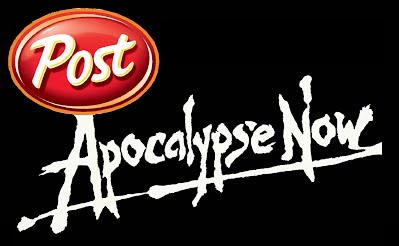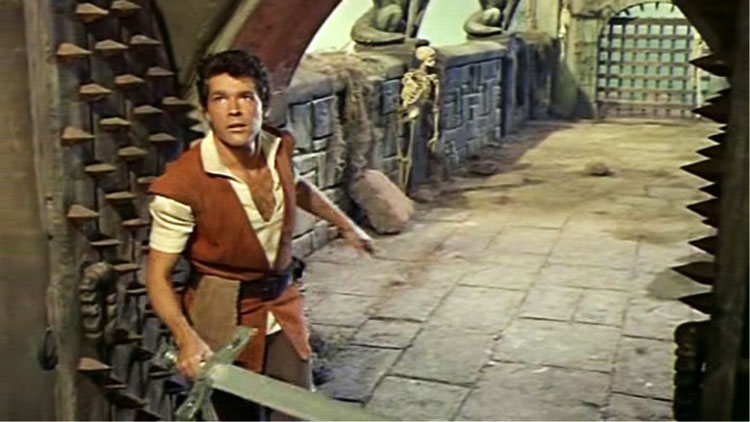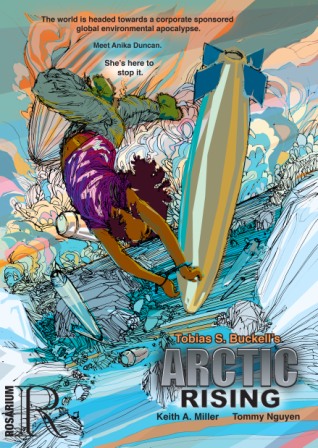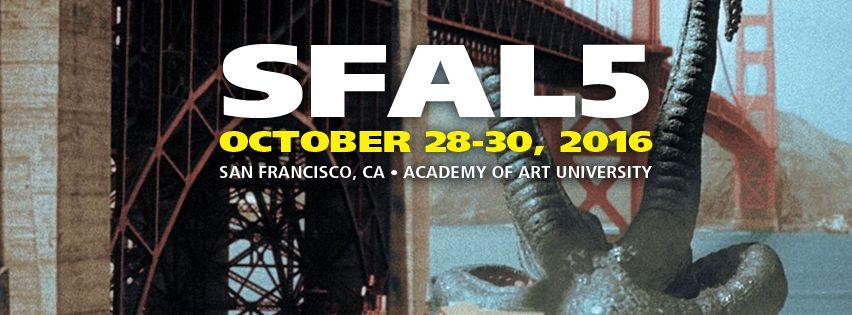(1) Today in History —
1846 – Eighth planet discovered — “German astronomer Johann Gottfriend Galle discovers the planet Neptune at the Berlin Observatory”.
Neptune, generally the eighth planet from the sun, was postulated by the French astronomer Urbain-Jean-Joseph Le Verrier, who calculated the approximate location of the planet by studying gravity-induced disturbances in the motions of Uranus. On September 23, 1846, Le Verrier informed Galle of his findings, and the same night Galle and his assistant Heinrich Louis d’Arrest identified Neptune at their observatory in Berlin. Noting its movement relative to background stars over 24 hours confirmed that it was a planet.
(2) A judge checked in with the Salt Lake Comic Con and San Diego Comic Con folks this week, who assured him they are working on a settlement:
Settlement talks are under way between San Diego Comic-Con and Salt Lake Comic Con over the use of the words “comic con,” FOX 13 is told.
Lawyers for both conventions met with a federal judge in San Diego on Tuesday to update the status of the lawsuit. Salt Lake Comic Con co-founder Bryan Brandenburg said both sides were working to reach an agreement.
“The judge wanted us to check in to see if progress had been made in the settlement. We reported the parties are still working out an agreement, but that we haven’t reached settlement, at least not yet,” he told FOX 13.
Brandenburg would not reveal any details about a possible settlement. The judge scheduled another hearing next month.
(3) Forbes writer Scott Mendelson theorizes a trailer will help draw people to theaters when The Martian opens this weekend in “’X-Men: Apocalypse’ Trailer Is Hyping ‘The Martian’”
If the rumor mill is to be believed, and in this case it makes sense, 20th Century Fox will be debuting the first much-anticipated teaser for X-Men: Apocalypse over the next week alongside the theatrical debut of Ridley Scott’s The Martian….
Back in the old days, you attached an important trailer to a big movie so that lots of people would see that big movie. Or at least you attached the trailer for your next big movie before your current big movie. That of course still happens, was we’ve seen from Universal/Comcast Corp. all summer long (Furious 7 trailers Straight Outta Compton or Fifty Shades of Grey trailers Crimson Peak)….
But here is a situation where the presence of a trailer for an upcoming blockbuster acts as major marketing not just for the movie in question but for the current (and arguably less commercial by default) release. At this point, a X-Men trailer helps The Martain more than it helps X-Men: Apocalypse. None of this is problematic in any real way, it just amused me.
(4) SF Signal’s new “MIND MELD: The Translated Books and Why We Love Them”, curated by James Aquilone, discusses the favorite translated sf of Aidan Doyle, Justin Howe (10badhabits.com), Tiemen Zwaan , Rachel S. Cordasco (facebook.com/bookishlywitty), Anatoly Belilovsky (http://loldoc.net), Sylvia Spruck Wrigley, Amy Sisson, and Matthew Johnson (www.irregularverbs.ca).
(5) I tend to be interested in what Mad Genius Club columnists say specifically about the craft of writing,such as Sarah A. Hoyt’s advice about revisions.
[First of eight points.]
1- when polishing a story limit yourself to three passes: sense, wording and typos. Chances are if you go on (and boy, could you go on) you’ll take all the flavor and individuality out of the piece. Flavor and individuality is why we read your story, rather than someone else’s. Yes, I know it’s not perfect. Let it go. No story is ever perfect.
(6) In her post “Harassment: What do we do?” dated August 20, Lydy Nickerson took Sasquan’s recent experience as a starting point to analyze the handling of harassment at conventions.
The thing that’s most recently caught my attention has been Lou Antonelli and Sasquan. For those of you who haven’t been making a hobby of the Great Puppygate Train Wreck, the extremely short version is that some guy, in this case Lou Antonelli, sent a letter to the Spokane police alleging that David Gerrold, one of the GoH for Sasquan, was dangerously mentally unbalanced and might incite violence. He then bragged about it on a podcast. There was a round of shock, awe, and horror; an apology to Gerrold from Antonelli; and other things. Sasquan was notified, as is proper. David Gerrold accepted Lou Antonelli’s apology. Sasquan issued a statement saying, very roughly, that Antonelli had violated the Code of Conduct, but for Reasons, including a request from Gerrold, they’ve decided not to ban him.
So, then there’s a bunch of Monday morning quarterbacking from just about everybody. Which is fine by me, I like detailed analysis, outrage, and train wrecks. But I’m paying special attention, because on a much smaller scale, this could be me. A lot of people were very upset, and there were two things that caught my eye. The first was a demand for consistent application of the rules, and the second was for transparency. There’s a lot of variation on those two themes, but those were the two I am currently noodling on. Consistent application was often equated with zero tolerance.
So, let’s start with the actual, root problem. People who feel vulnerable to harassment at science fiction conventions do not trust those conventions to fairly and justly administer the rules. I cannot come close to doing justice to how very reasonable it is for them to feel that way. That distrust? We’ve built it, brick and mortar, over years. It’s not just well deserved, it’s hugely massively utterly deserved. Harassment policies have been non-existent, or poorly explained or hugely badly enforced. We have multiple known cases of people being allowed to fuck up because they were well connected, or because the concom didn’t want to be arsed, or because concoms just didn’t think there was a problem….
(7) Paul Weimer on “Orwellian unpersoning on the Sad/Rabid Puppies Part” at Blog, Jvstin Style.
You know, its rich that Sad Rabid Puppies would go so far as to unperson someone they accused of being a “Social Justice Warrior”
http://leogrin.com/CimmerianBlog/your-cimmerian-bloggers/ http://www.scifiwright.com/2015/09/leo-grin-grins-when-he-slays/
Sure, freedom of association and all that…but this looks awfully…Orwellian?
The actual thing that caused this seems to be that one of the former bloggers said something bad about someone and their association with super genius Theodore Beale.
(8) John Scalzi in “eBook Sales and Author Incomes and All That Jazz” at Whatever.
I’ve noted before that I think in general there are three kinds of authors: Dinosaurs, mammals and cockroaches, where the dinosaurs are authors tied to an existing publishing model and are threatened when it is diminished or goes away, mammals are the authors who rise to success with a new publishing model (but who then risk becoming dinosaurs at a later date), and cockroaches are the authors who survive regardless of era, because they adapt to how the market is, rather than how they want it to be. Right now, I think publishing might be top-heavy with dinosaurs, and we’re seeing that reflected in that Author’s Guild survey.
What we’re missing — or at least what I haven’t seen — is reliable data showing that the mammals — indie/self-publishing folks, in this case — are doing any better on average. If these writers are doing significantly better on average, then that would be huge. It’s worth knowing.
(9) Deborah J. Ross in “Gossip and Controversy”
I have refrained from any commentary on the Hugo Awards and all the events that led up to them. This does not mean I have not had opinions. Excuse me, Opinions. Only that I saw no point in adding gasoline to the burgeoning wildfires. Now various voices are urging everyone to play nice, to not harbor grudges. To get on with the business of writing (and reading) the best stories we can. Here’s a post I composed a few years ago on the subject of gossip. I should add that I am not entirely innocent, and I have been on the receiving end of some vile accusations, as have folks I care about. It is helpful to me to consider my own behavior (both passing on gossip and being appalled by it) in a larger — and hopefully, more compassionate — context:…
A huge piece of the problem, in my experience, is that we are inundated with role models of gossipers. We are told overtly and covertly that it is not only acceptable but enjoyable to speak ill of others and to relish their misfortune. If they have no discernible misfortune to begin with, well then we will create some! If media portray the pain of those who are gossiped about, it is often to glorify retaliation in kind. Almost never are we taught what to do when we speak badly. Saying “I’m sorry,” or “Shake hands and make up,” (as we’re forced to do as small children) does not make amends.
Certainly, we must begin by looking fearlessly at what we have done or said (or left undone and unsaid), but we must also be willing to accept that there is no justification for our behavior. It doesn’t matter if what we said was true or not if it harmed someone. It doesn’t matter if we were hurting or grieving or too Hungry-Angry-Lonely-Tired.
What we have done does not make us unworthy, unlovable, inadequate, or anything except wrong. Good people can be wrong. Good people, when wrong, strive to make things right.
(10) Ruth A. Johnston, author of Re-Modeling the Mind: Personality in Balance, was interviewed by L. Jagi Lamplighter at Superversive SF about the psychology of science fiction. In “The SF Culture War Posts – Part Two” Johnston applies her theory to characters in John C. Wright’s Night Land stories.
Part Two of our multi-part look at the psychology of Science Fiction, as explained by Ruth Johnston, author of Re-Modeling the Mind, a new book that takes a fresh look at Jung’s work on personalities…
Q: Let’s talk about the ideas you share in your new book. What light can they shed either on the original Night Lands or on John and his version?
Science fiction fans are usually personalities in which Intuition is a very strong part, often the strongest and most dominant. When it’s Extroverted, the universe seems full of possibilities waiting to be connected. Under every rock or behind every star could be a great invention or cure. When it’s Introverted, the personality usually has an innate feeling of knowing the truth of the world, so that exploring ideas is a matter of looking inward, following an inborn map of meaning. It’s also a bit more pessimistic and idealistic: under every rock there might be a rattlesnake, not a cure for cancer. But the rocks do need to be turned over, because it’s terribly important to find truth and roll away anything that covers and hides.
William Hope Hodgson’s original story seems full of Extroverted Intuition to me. Technology keeps mankind alive and there’s no real downside. His dark world is filled with evil spirits and creatures, but mankind’s ability to solve problems keeps one step ahead so that they can build a good way of life. The optimism of his Intuition feels so powerful in the story that I believe he probably had this kind of Intuition in his personality. It creates a sort of worldview.
I think this is some of what charmed John when he read the 1912 novel, and because I know John from college, I can say without guessing that he has that kind of Intuition. In his mind, the world is full of dots to be connected, and we’ve barely begun to connect them all.
Now the other half of the polarity I’m calling A is Introverted Sensing, which can show up as an intense idealism about human social roles. In fantasy and science fiction, it comes out in taking fairy-tale roles like king and knight very seriously. It also believes strongly in archetypal images like mother and father, male and female. When someone with A writes SFF stories, the setting and events can become wild and even chaotic, but the human roles never move much from archetypes. We see this clearly in both Night Land versions, the original and John’s. Anyone walking in the Night Land is going to be surprised by whatever comes next, whether it’s a fire pit, a dangerous creature, an oddly detached spirit, a living stone monument, or a cluster of blind worms. The stories depend strongly on human thought, activity, and roles to give them structure: like putting a snail into its shell. Human roles are stable, not flexible and random like the setting and ideas….
(11) Vivienne Raper asks “Do the Hugo Awards have a short fiction problem?” at Futures Less Traveled
At least one person complained that the Sad/Rabid Puppy nominees kept award-worthy short stories off the 2015 Hugo ballot… So I was curious. Was this true? Were these stories better than the stuff I’d read? An experiment was in order. I’ve now read the nominees on io9’s Puppy-free ballot. Here’s how I’d have voted.
#1 WINNER – When it Ends, He Catches Her, Eugie Foster
When It Ends, He Catches Her has a tale behind it, and it’s the saddest in the Hugos. The day after Daily Science Fiction published the story, Eugie Foster died. It was her last chance to win the award.
There is no doubt – to me – that When It Ends, He Catches Her should have won Best Short Story. It is a story I wish I could have written. That – to me – is the purpose of the Hugos, to showcase work that I know I can’t… Perhaps can never write.
But don’t stop there – Vivienne ranks No Award in second place, then goes on to discuss several proposed runners-up.
(12) Prometheus and Alien sequels are expected.
Ridley Scott set tongues wagging the other day by suggesting he might make as many as three more Prometheus sequels before tying it up with the Alien franchise, reports Comicbook.com.
Scott has promised that Prometheus 2 will answer many of the questions left open in the 2012 film. However, Scott has told German website FilmFutter (via bloody-disgusting) that he won’t show how the Prometheus franchise connects to Alien in the next film. He’s saving that reveal for … Prometheus 4?!
“It won’t be in the next one. It will be in the one after this one or maybe even a fourth film before we get back into the Alien franchise…,” explained Scott. “The whole point of it is to explain the Alien franchise and to explain the how and why of the creation of the Alien itself. I always thought of the Alien as kind of a piece of bacterial warfare. I always thought that that original ship, which I call the Croissant, was a battleship, holding these biomechanoid creatures that were all about destruction.”
Jon Spaihts’ original script for Prometheus was a direct prequel to Alien. In it, David (Michael Fassbender) the android comes across and revives the Space Jockey (also referred to as The Pilot) who was last seen as a fossil in the 1979 film. We would’ve seen how The Pilot ended up dead on LV-426 from a Chestburster, but that storyline was jettisoned during extensive rewrites. Instead, Scott chose to have David and the rest of the crew end up on a whole other moon and come upon the Last Engineer.
Prometheus 2 will begin filming in February of 2016.
“Maybe the next Alien will burst out halfway through the third Prometheus sequel??” joked Will R.
Earlier than that, figuratively speaking, There is an Alien sequel aiming for release in 2017.
Director Neill Blomkamp got media attention last February when he released concept art images from a new Alien movie he was working on, reportedly without authorization from any studio.
Variety reports separately that Blomkamp has a deal with 20th Century Fox to direct the movie, which will be a different project altogether to Fox’s Prometheus sequel with Ridley Scott. According to The Wrap, the untitled Blomkamp movie will be produced by Scott and take place after the events of Prometheus 2.
And he generated some more word-of-mouth for the project in July by repeating the stunt. First Showing then recapped what it knew about the prospective movie.
We don’t know too much about Blomkamp’s new Alien movie yet, however we’ll recap what we do know. Between this concept art and the last piece, it definitely looks like Sigourney Weaver will be back as Ripley. A few months ago, Blomkamp explained that “She knows about it, and part of it was just inspired by speaking to her on set when we were filming Chappie, and getting her thoughts on Alien and what she thought of the movies that came after Aliens and what she felt about Ripley and what was incomplete for her about Ripley. There was so much fuel in what she was telling me.” Fellow filmmaker Ridley Scott is also producing this new Alien, so he is directly involved in it and working with Blomkamp. The film is currently aiming for release in 2017, so stay tuned for any more updates.
[Thanks to Will R., L. Jagi Lamplighter, and John King Tarpinian for some of these stories. Title credit goes to File 770 contributing editor of the day James H. Burns.]







